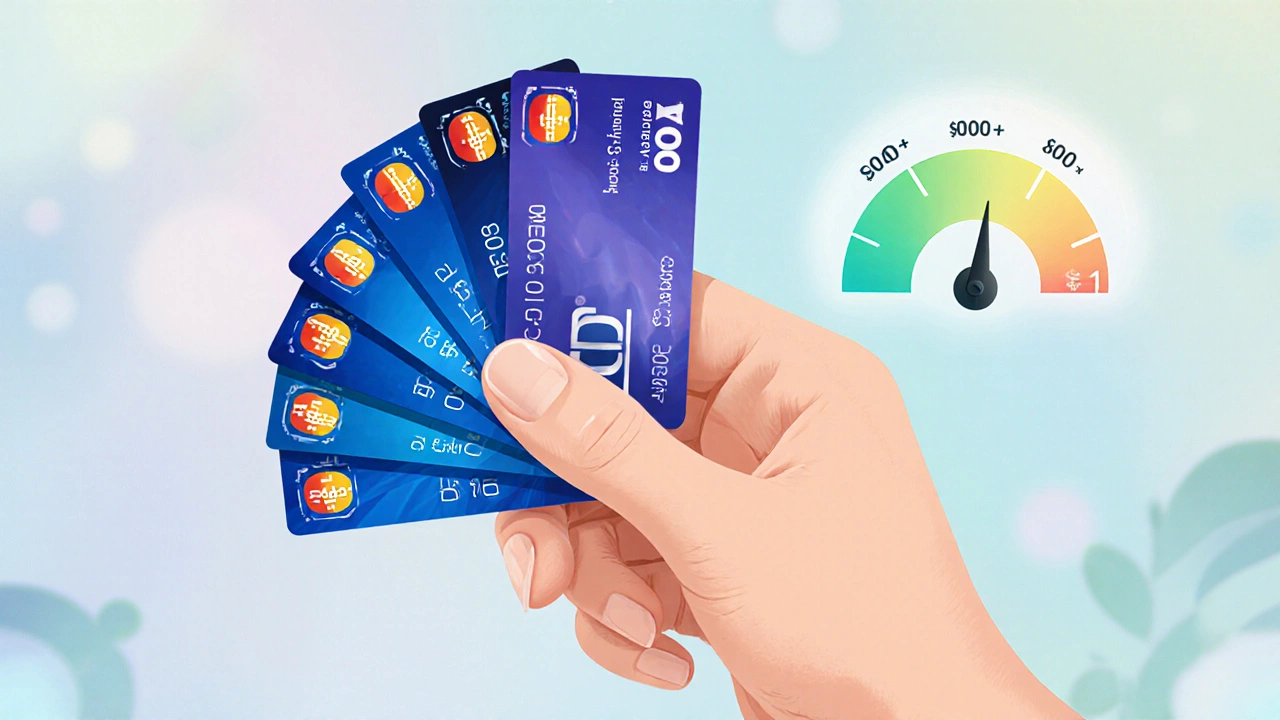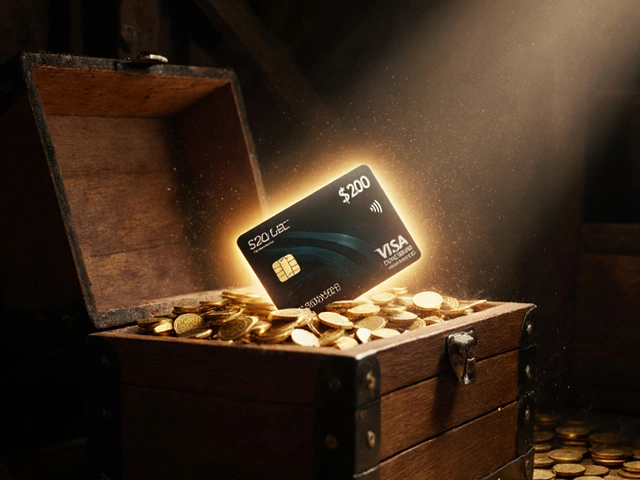
Credit Card Utilization Calculator
This tool helps you understand how your credit card balances affect your credit utilization ratio, a key factor in your credit score (30% of your FICO score).
Credit utilization is calculated as (total balance / total credit limit) × 100%.
Add Your Credit Cards
Your Cards
| Credit Limit | Balance | Utilization | Actions |
|---|
Total Utilization
When you hold credit cards that all show a $0 balance, it can feel like a smart move - you keep your accounts active, enjoy rewards, and stay clear of debt. But does stacking up multiple credit cards with zero balances actually hurt you? The short answer: it depends on how the accounts interact with the factors that make up your Credit score. In this guide we break down the key drivers, common myths, and practical steps so you can decide whether that card‑stacking strategy is a win or a hidden risk.
Key Takeaways
- Zero‑balance cards don’t directly lower your credit score, but they can affect Credit utilization and Credit age.
- Each new card triggers a Hard inquiry, which may dip your score by a few points.
- Keeping cards open for the long term can boost the average age of your accounts - a positive signal for lenders.
- Annual fees and missed payments are the real dangers; a zero balance alone isn’t a problem.
- Use a strategic approach: limit new applications, monitor utilization, and keep cards you truly need.
How Credit score Calculations Work
Most scoring models (FICO, VantageScore) break down your score into five buckets:
- Payment history (35%): whether you’ve paid on time.
- Credit utilization (30%): the ratio of balances to limits.
- Length of credit history (15%): average age of accounts.
- Credit mix (10%): variety of revolving vs installment credit.
- New credit (10%): recent inquiries and opened accounts.
Zero‑balance cards touch three of these: utilization, length of history, and new credit. Let’s see how.
Zero Balance and Credit utilization
Utilization is calculated per card and across all revolving credit. The formula is simple:
Utilization = Total balances ÷ Total credit limits × 100%
When every card shows $0, the numerator is zero - giving you 0% utilization, which is the gold standard. However, adding more cards can lower your overall limit denominator effect, but only if you keep balances low. The real issue appears when you close a card: the total limit shrinks, potentially raising your utilization if you carry any balance elsewhere.
In practice, having many $0‑balance cards can actually help keep your utilization low, as long as you avoid the temptation to spend up to the high combined limits.
Impact of Hard inquiry and New Credit
Every time you apply for a new card, the lender runs a hard pull on your Credit report. That inquiry typically knocks off 5‑10 points, but the hit is short‑lived (usually 12 months). If you’re rapidly adding cards, the score impact can compound.
Beyond the numeric dip, lenders also look at the pattern: a flurry of applications may signal financial distress, which could influence a credit decision even if your score stays high.
Effect on Credit age and Credit Mix
Each new account resets its own “age” clock, which drags down the average age of your revolving credit. Since Length of credit history contributes 15% to your score, a sudden influx of fresh cards can cause a modest decline.
On the flip side, keeping older cards open (even with $0 balance) adds positive weight. The key is to avoid closing long‑standing accounts, because that can instantly reduce the average age.
Having a variety of cards - rewards, travel, low‑interest - also improves the credit mix factor, though the effect is minor compared to payment history and utilization.
Hidden Costs: Fees, Rewards, and Inactivity Policies
Zero balances hide two practical dangers:
- Annual fee: Some premium cards charge $95‑$550 per year. If you’re not extracting enough value, the fee can outweigh any credit‑score benefit.
- Rewards program churn: Issuers may downgrade or cancel cards that sit unused for months, potentially closing an account and hurting your credit age.
Additionally, if you forget a payment due date, a missed payment can drop your score dramatically, regardless of the balance amount.

Should You Keep All Zero‑Balance Cards?
Answering this question requires a quick self‑audit. Below is a simple decision matrix you can copy into a spreadsheet.
| Criterion | Keep | Close |
|---|---|---|
| Annual fee > $0 | No (fees outweigh benefits) | Yes |
| Rewards earned > $20/mo | Yes (value exceeds cost) | No |
| Account age > 5 yrs | Yes (helps credit age) | No |
| Inactivity policy (closure after 12 months of $0) | Use occasionally (e.g., small purchase paid off) | Yes, if you can’t keep activity |
Apply the matrix to each card. If a card ticks mostly “Keep” boxes, it’s likely a net positive for your credit profile.
Practical Tips for Managing a Card Stack
- Set a calendar reminder to make a $1‑$5 purchase each month and pay it off instantly; this keeps the account active without harming utilization.
- Track annual fees in a simple spreadsheet; if a fee exceeds the annual rewards cash‑back or points value, consider closing.
- Limit new applications to 1‑2 per year unless you have a specific need (e.g., a card with an intro 0% APR).
- Monitor your credit report quarterly via Credit bureaus (Equifax, Experian, TransUnion) to ensure no erroneous closed accounts.
- Keep at least one low‑interest or balance‑transfer card open for emergencies; this adds diversity without high fees.
Case Study: Jane’s Credit Journey
Jane, a 32‑year‑old digital nomad, opened five reward cards in 2022, each with a 0% introductory APR and no annual fee. She never carried a balance, so her utilization stayed at 0%. By 2024, she had a FICO score of 795. However, in early 2025 she applied for a sixth card to chase a travel bonus. The hard inquiry dropped her score to 780, and the new card’s lower limit decreased her average credit age. After consulting a financial coach, Jane closed two cards with annual fees of $95 each, kept the three longest‑standing cards, and set monthly reminders to use them. Six months later her score rebounded to 805.
Jane’s story shows the delicate balance: the right number of cards can boost your score, but unnecessary churn and fees can erode the advantage.
When Zero‑Balance Cards Can Be a Red Flag
Lenders sometimes view a fleet of unused cards as “credit padding.” If you apply for a mortgage or auto loan, the underwriter may ask why you hold multiple dormant accounts. Be prepared to explain the strategic purpose (rewards, credit utilization management) and show that you manage them responsibly.
Bottom Line
Having a lot of credit cards with $0 balances isn’t inherently bad. The real risks lie in the side effects: hard inquiries, reduced average age, fees, and potential account closures. By monitoring the three score‑impacting factors-utilization, new credit, and credit age-and pruning cards that cost more than they give, you can keep the benefits (low utilization, diverse mix) while protecting your score.

Will my credit score drop if I keep a credit card I never use?
No, a dormant card with a $0 balance does not directly lower your score. In fact, it can help keep your credit utilization low and increase the average age of your accounts, both of which are positive factors. The only downside is the potential for annual fees or inactivity closures, which could indirectly affect your score.
How many credit cards is too many?
There’s no fixed number. The sweet spot is usually 3‑5 cards that you can manage comfortably, have low or no fees, and serve different purposes (rewards, low‑interest, emergencies). Adding more than that can increase hard inquiries and complicate management, which may outweigh any extra credit limit benefit.
Do hard inquiries stay on my credit report forever?
Hard inquiries remain for two years, but they only affect your score for the first 12 months. After that they become a background detail that lenders rarely weigh heavily.
Should I close a zero‑balance card with an annual fee?
Generally yes. If the fee exceeds the value you get from rewards or the card’s impact on your credit profile, closing it saves money and avoids a negative perception from lenders. Just make sure the account isn’t very old, as closing a longtime card can lower your credit age.
How often should I use a zero‑balance card to keep it active?
A tiny purchase (like a coffee) paid off in full the same day, once every 30‑45 days, is enough to show activity and prevent inactivity closures for most issuers.








Write a comment